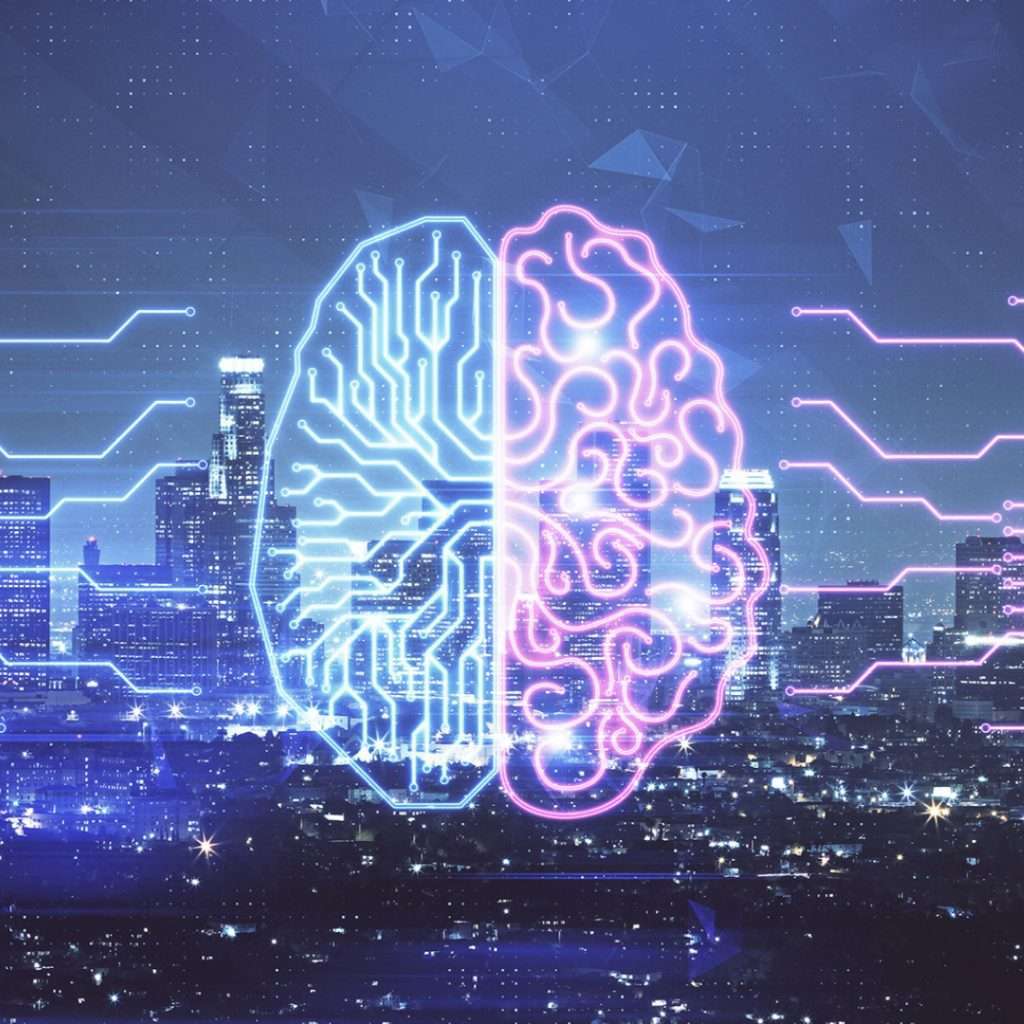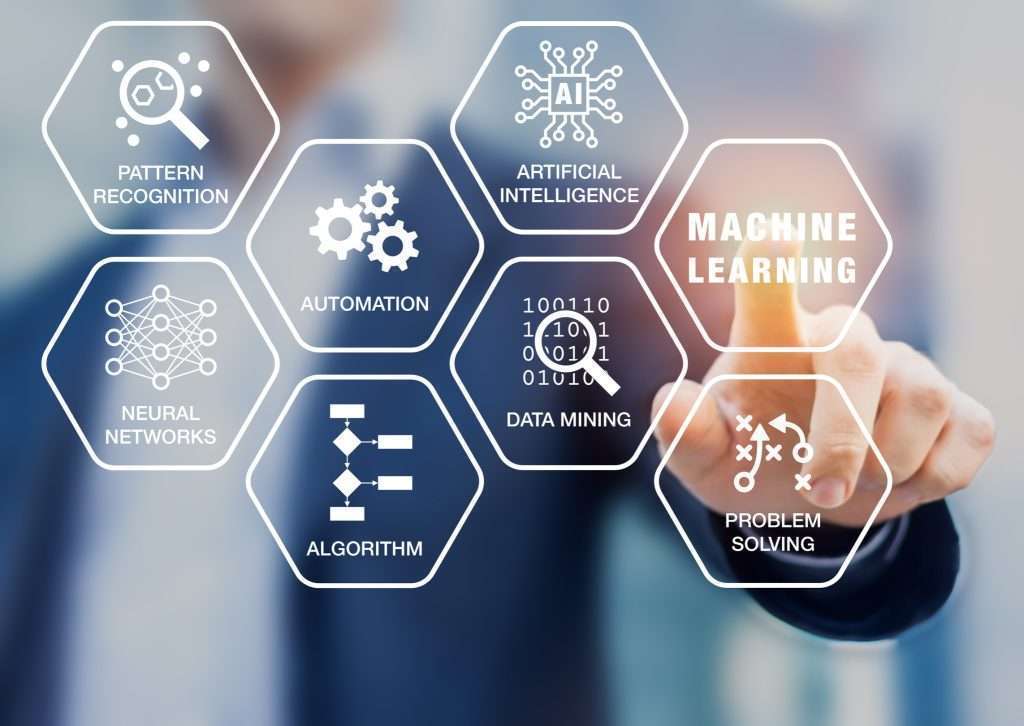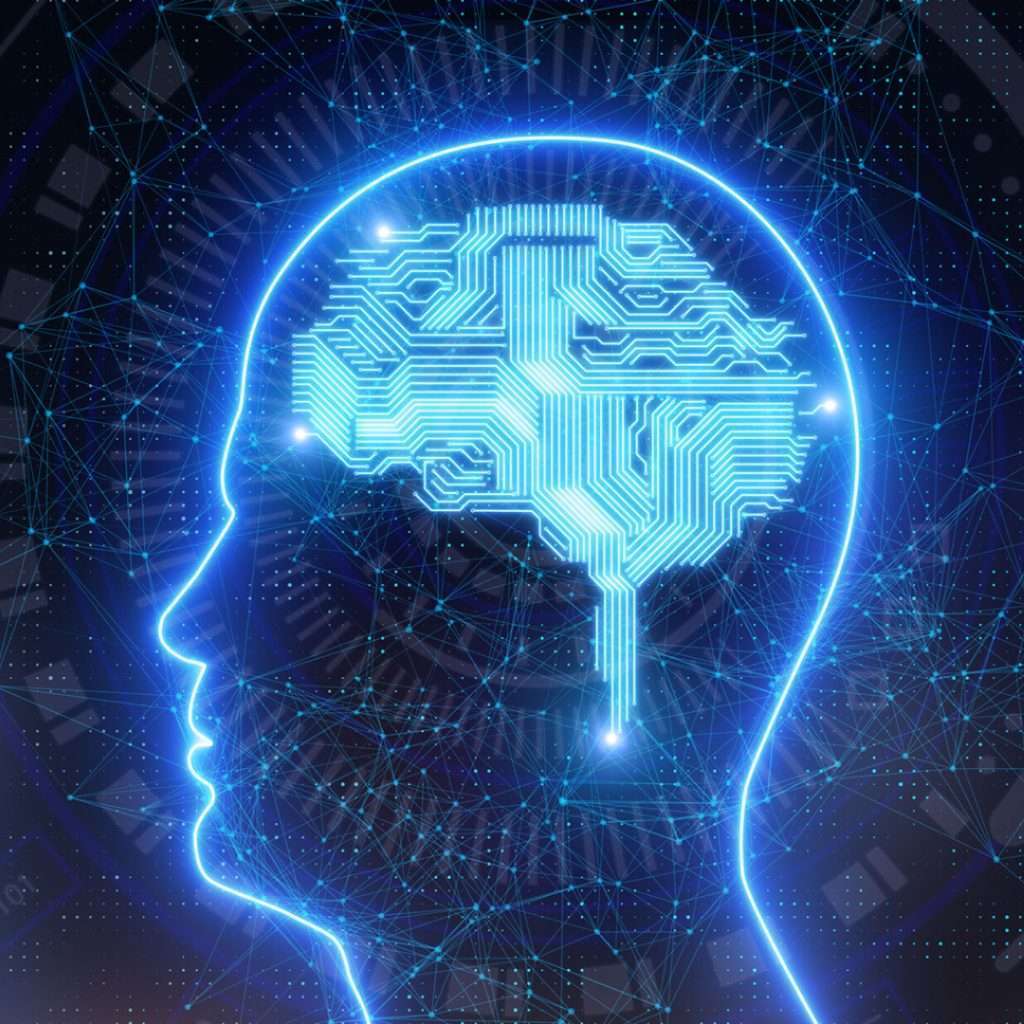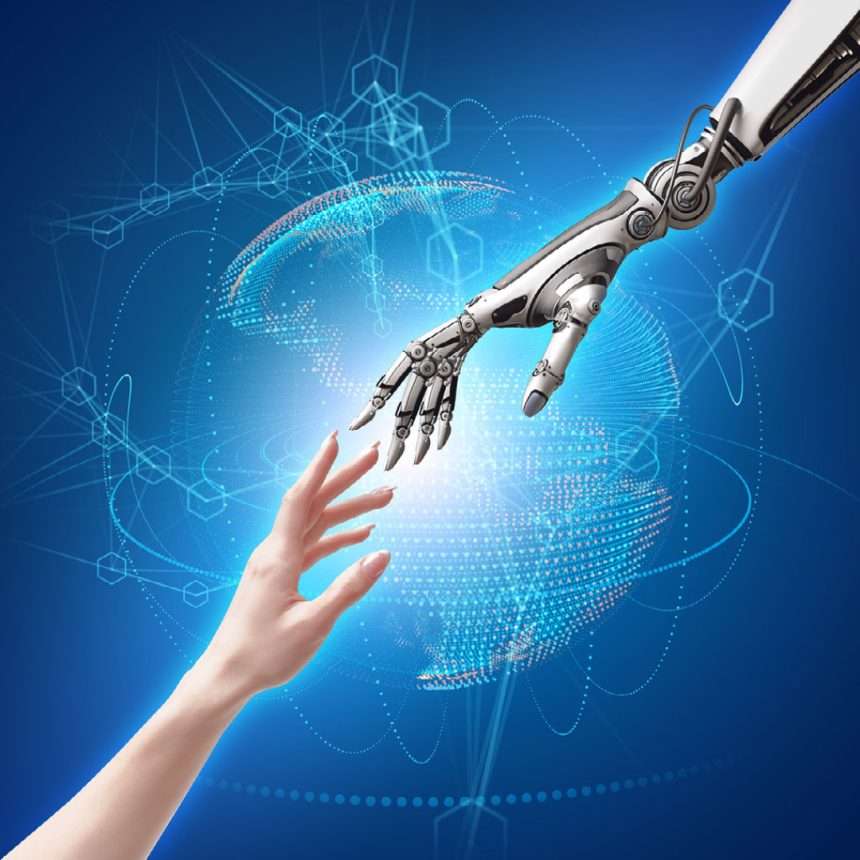Let’s examine why artificial intelligence in healthcare is necessary.
The WHO recommendation for a minimum doctor-patient ratio is 1:1000.
In India the average is 0.75:1 with density of doctors in urban areas 1.71 per 1000 population, whereas that in rural areas 0.45 per 1000 population.
Healthcare in India is lacking, and artificial intelligence or AI can offer a solution to this by allowing more Indians to utilize state-of-the-art technology in healthcare, helping bridge the gap.
WHAT IS ARTIFICIAL INTELLIGENCE OR AI?
The term artificial intelligence refers to a machine or computer program that can do tasks and make decisions normally carried out by humans.
HOW DOES AI WORK?
Artificial intelligence specialists or experts teach these computers a specific task by giving instructions in a language the computer understands.
Machine learning is a subfield of AI in which algorithms and programs are used to perform a task and improve performance over time. For example, voice recognition, face recognition, etc.
A deep learning algorithm uses artificial neural network (ANN) to analyze a large dataset, such as images or scans, to achieve its goal.

ANN: Like the human brain, which possesses many neurons interacting to carry out any given task, an artificial neural network contains layers of neurons that recognize complex information to perform a given task.
ANN comprises of
Input: where the dataset is fed into the algorithm
Black box of hidden patterns: in this case, the machine studies complex data in a way not yet deciphered by humans, hence the name.
Output: Result or prediction
TYPES OF MACHIENE LEARNING
ML is of 3 types, supervised, unsupervised, and reinforcement.
In supervised training, the algorithm is trained with a labeled dataset.
Unsupervised training involves the algorithm being trained with an unlabeled dataset, without the aid of humans. The machine then begins to learn by studying the hidden patterns on its own.
Reinforcement training occurs when the algorithm accumulates positive feedback for each successful task performed. Through the process of trial and error, the machine learns to get more and more positive feedback and eliminate negative feedback
METHOD:
The computer is given an input of retrospective public dataset by retrieving it from the electronic health records from various hospitals.
Computers are trained to identify the problem using this dataset along with the algorithm, and the results are clinically validated and scored.
A high score indicates positive feedback, whereas a low score indicates negative feedback, and the computer keeps correcting errors until it achieves the maximum score.
After the experts’ approval, this can then be deployed on a device that can be used for disease screening.

AI AND HEALTHCARE
Today, technology is rapidly advancing in all sectors. We are able to conduct financial transactions without going to the bank, we can monitor our homes and loved ones sitting far away through CCTV cameras, and we can order groceries at our doorstep by simply using our smartphones.
Technology has changed our lives drastically, and it’s here to stay because it’s easy to use, saves time and energy.
All these inventions have made living easier, allowing us to focus and give more time to other important things in life.
In the same way, AI is going to change the face of healthcare where professionals will not have to use their resources to evaluate every person walking through their door.
A simple computer examination can tell if the person is having any disease activity or not, if yes then what is the stage and severity of it.
This helps in triaging.
The results will already be available before the patient walks into the doctors’ office.
This saves the ophthalmologists time and energy that they can devote to other complex diseases and their management.
HOW WILL ARTIFICIAL INTELLIGENCE HELP?
Think of a 50-year-old woman named Roopa who lives alone in a remote village in India, unaware that she has glaucoma and, if not treated promptly, could become blind within 10 years. For her livelihood, she works on the farm. She can’t afford to lose her vision.
She has a primary health center close to her home and she asks her neighbor to drop her there to pick up some tablets.
That PHC just installed a glaucoma screening computer, and the healthcare worker insisted that Roopa get her eyes checked.
The computer result showed that Roopa has early glaucoma.
Concerned and anxious, she visits an ophthalmologist in the city who confirmed the diagnosis and prescribed drops.
She goes to her follow-up appointments regularly and takes steps to preserve her vision.
Had it not been for AI, Roopa would have been losing her sight by now.
ROLE OF AI IN OPHTHALMOLOGY
Healthcare and in particular ophthalmology has a lot to gain from AI.
Why ophthalmology?
Ophthalmology relies heavily on imaging for diagnosing, treating, and monitoring.
Various imaging modalities such as OCT, FFA, ICG, and IOL calculations already have a variety of datasets in their system. This can be used to train computer programs about disease identification, staging and progression.
The various diseases where AI already is being used are
Diabetic retinopathy
Glaucoma
Keratoconus
IOL calculations
Myopia progression
ARMD
ROP
Diabetic Retinopathy or DR
DR is a potentially blinding disease and The Union Health Ministry’s first National Diabetes and Diabetic Retinopathy Survey (2015-19) has revealed that the prevalence of sight-threatening DR is 3.6%.
Early on, DR is difficult to diagnose, especially since the disease is symptomless. Delaying a visit to the doctor increases the chance of the disease progressing and reaching a stage beyond repair.
In 2018, the US Food and Drug Administration approved the use of IDX for diabetic retinopathy screening in primary care settings.
One study concluded by stating that Automated grading using the IDx-DR device for RDR (Referable Diabetic Retinopathy) detection is a valid method and can be used in primary care, decreasing the demand on ophthalmologists.
Glaucoma
Because glaucoma is usually painless and the vision loss begins from the peripheral area at first, later progressing to the center, most patients do not realize they are suffering from it until it is too late.
Also known as the silent thief of sight, glaucoma, is a condition in which there is the death of retinal cells usually due to increased IOP. The early changes are difficult to identify clinically.
Pegasus is a deep learning AI intelligence software to detect optic nerve changes or optic neuropathy due to glaucoma. Several glaucomatous optic disc photographs were fed into the system so that the machine learns to identify the disease.
The research stated that pegasus was able to diagnose Glaucomatous optic neuropathy with an accuracy of 83.4% as compared to 80.5% by ophthalmologists.
Moreover, there are studies that claim that the deep learning artificial intelligence algorithm can be used to predict glaucoma several years before it starts manifesting in patients.
The disease predictability alerts the doctors to take necessary steps in the management much earlier than before. Thus reducing the burden of blindness due to glaucoma worldwide.
AMD (Age-related Macular Degeneration)
Age-related macular degeneration or AMD is of 2 types, dry and wet.
Dry doesn’t show any symptoms and most of the time patients don’t even know they have it.
The wet type is a progression from the dry type and shows the presence of vessels on the macula which may bleed and result in loss of vision and even blindness. Therefore it becomes very important to monitor the disease activity at any stage.
AI can help patients and doctors detect AMD while the disease is at the earlier stages or even before manifesting clinically.
There was a metanalysis to judge the performance of AI in detecting AMD by fundus or retinal photographs. The outcome was encouraging with AI successfully detecting AMD with 95% sensitivity and specificity.
Keratoconus:
Normally the cornea or the transparent outer layer of the eye is ellipsoid. In keratoconus however, the cornea becomes cone-shaped causing irregular astigmatism which is why patients are required to wear high cylindrical power glasses or hard contact lenses to see clearly.
Regular monitoring of corneal changes in a Keratoconus patient is imperative to detect any progression. Progression here means thinning of the cornea which might lead to splitting of corneal layers or perforation which might require corneal transplantation.
A computer program with an algorithm and input of corneal maps, thickness, elevations, and other measurements will aid in predicting keratoconus and its progression in individuals.
Further research is needed for developing algorithms that have a variety of inputs and outputs that can be correlated to clinical outcomes.
IOL calculation:
A successful cataract surgery is dependent on IOL calculation, as this determines post-op outcome. There are numerous formulas for calculating IOL power depending on the size and shape of the eyes. But these formulas are only 75-80% accurate.
There is, therefore, a need for an improved formula.
Studies have shown that AI techniques are most effective for predicting IOL power. Furthermore, continual feeding of new data will only improve the formula’s accuracy.
Myopia progression:
A study states that “In recent days huge medical record AI is a boon to medical science. With the help of an efficient AI model, it is possible to predict myopia with greater efficacy than manual prediction.”
With the help of AI integrated with patient datasets from vast EMR from various hospitals, it is possible to classify and predict myopia.
The future is to include other parameters such as genetics, and environmental factors to make AI more generalizable in detecting Myopia across all populations, genders, ethnicity and age groups.
Retinopathy of prematurity/ROP:
A country’s socioeconomic development and mortality rate of children under five years of age are factors influencing the prevalence of childhood blindness.
A study found that childhood blindness accounts for between 4 and 5% of all blindness in the world. Despite the scarcity of studies in India to measure childhood blindness, available evidence suggests that one child out of every 1000 is blind.
Retinal conditions, mainly ROP and hereditary retinal dystrophies account for 19.3%
to 22% of severe visual impairment among children in India.
Retinopathy of prematurity, also known as ROP, occurs in premature newborns when the retina has abnormally fragile blood vessels. The disease goes through various stages to a stage where these abnormal vessels bleed or pull out the retina, causing blindness in many cases. Identifying the stage, severity and progression is very important in ROP.
The Multicenter Study of Early Treatment for Retinopathy of Prematurity (ET-ROP) study found that 68% of infants born <1251 g developed at least mild ROP.
Screening burdens in low- and middle-income countries are often too high and are difficult to meet with the existing workforce, so artificial intelligence-assisted disease screening may be an effective way to increase efficiency.
The first step is to integrate the algorithms into the camera called Ret-cam, which takes fundus images.
It has also been suggested to use low-cost fundus cameras, including mobile devices, to lower the capital costs needed for telemedicine infrastructure; however, this strategy has not been tested extensively.
AI may also improve early identification of severe ROP before sight threatening complications develop.
CHALLANGES:

1. Input: For AI to give accurate results the dataset fed into the system has to be large, and diverse, including various ethnicity, populations, age group and even image quality.
2. Blackbox: This strategy involves feeding an algorithm with a dataset and then having the system generate the output which is then validated by clinicians. But how the algorithm works and how the computer determines the output cannot be predicted by human brain. Hence the term “the Blackbox” approach.
Many people are not comfortable with not knowing what happens inside the black box.
3. Output: validation of results. This may vary across various populations, ethnicity, age group, gender etc.
Input → Blackbox → Output
4. Patient acceptability: In the case of a machine making the diagnosis as opposed to a doctor, the patient might question the accuracy.
5. Manufacturing and scaling a portable, affordable, and readily available device.
6. Medico legal aspect: In order for AI to fully engage in clinical practice, there must be a proper legal framework and legal clarity.
QUICK SUMMARY:
In India, prevalence of diabetic retinopathy is 16.9%, ARMD is 39.5% and around 11.2 million Indians above the age of 40 years are affected by glaucoma.
Despite their potential for blinding patients, these conditions can be prevented or treated. But due to inadequate healthcare facilities especially in remote and rural areas, severe visual impairment and blindness are issues of growing concern.
Artificial intelligence in healthcare could be used in resource scarce areas to screen patients and refer them to higher facilities for management. This is going to add more load to the already overburdened healthcare system, thus we must begin by building more hospitals and better infrastructure.

